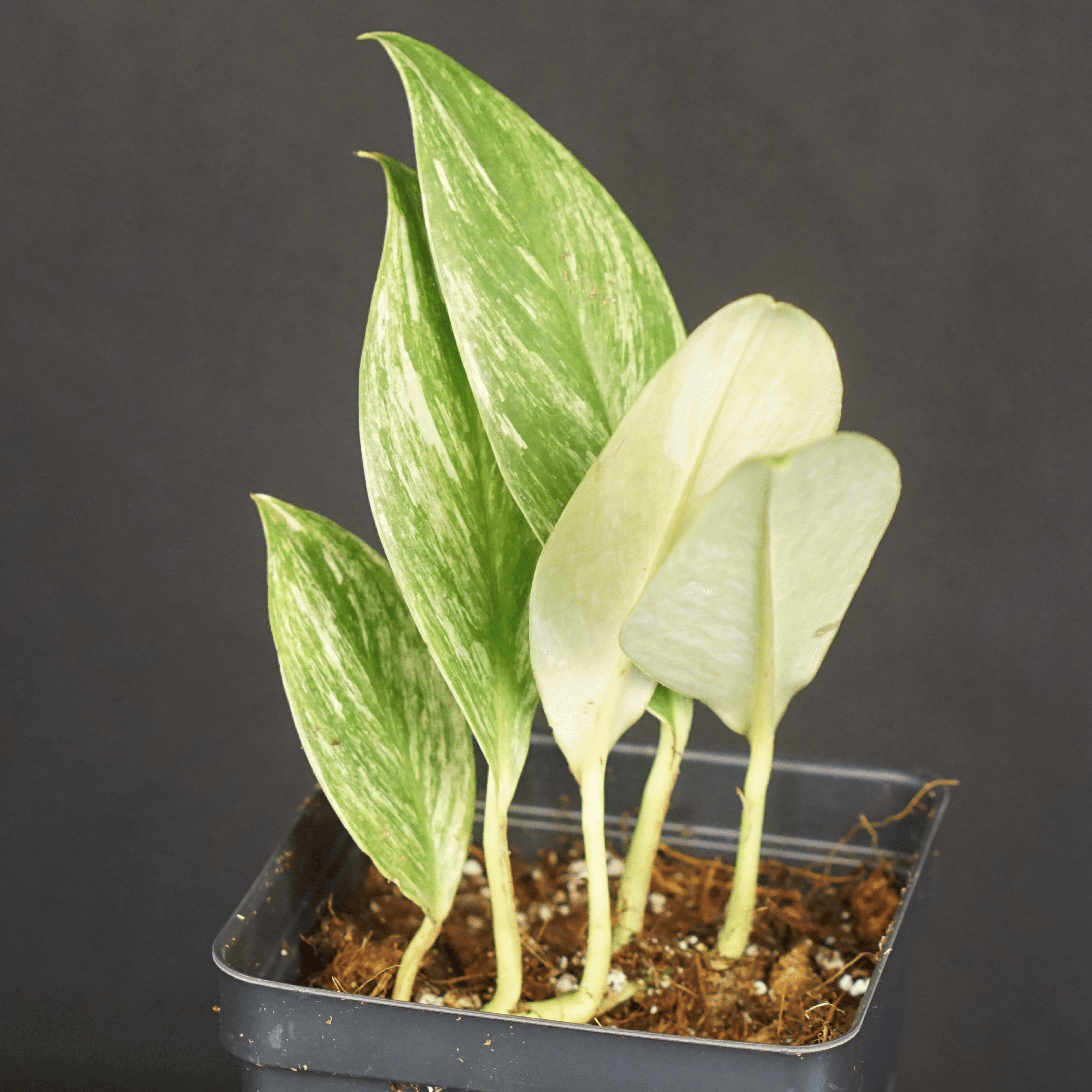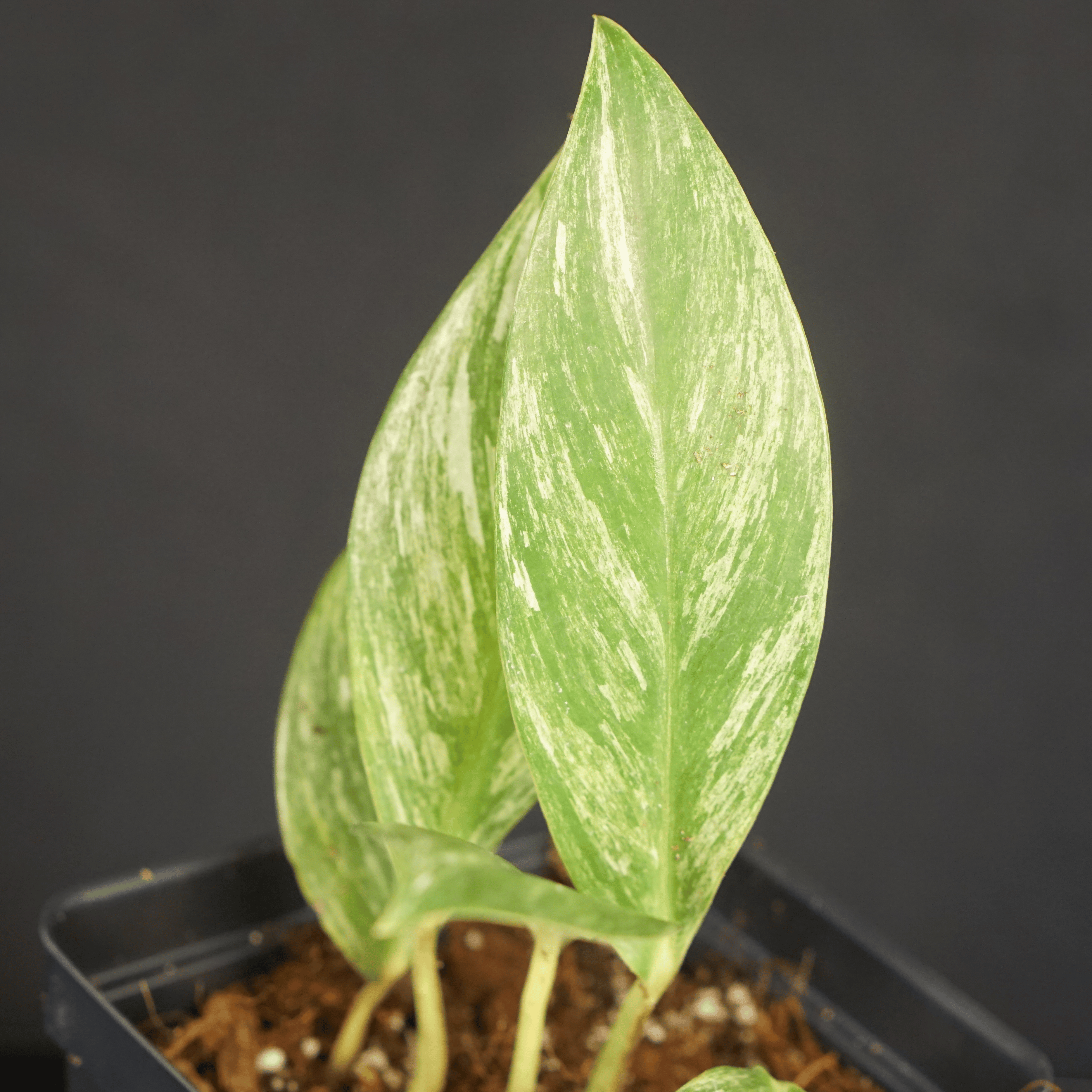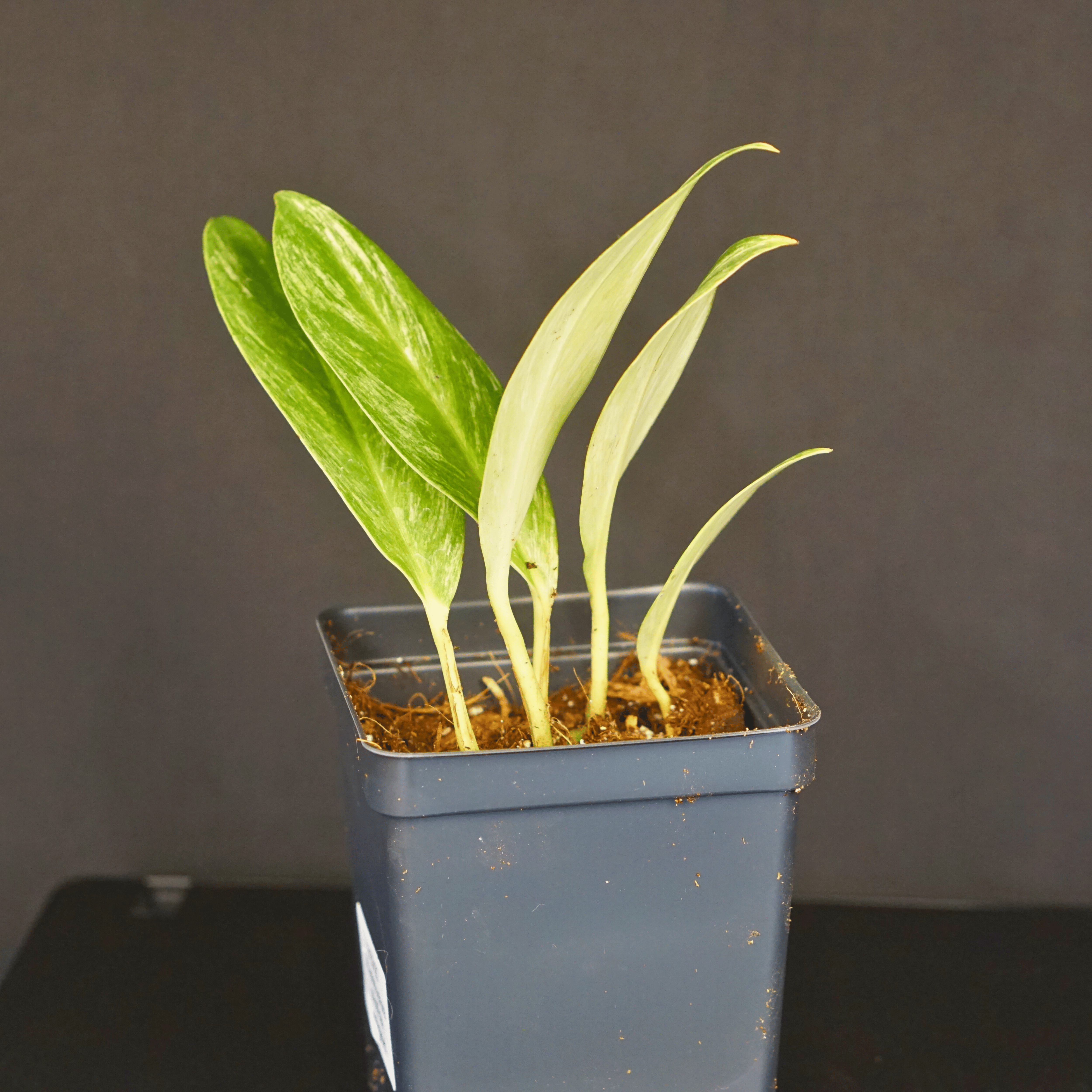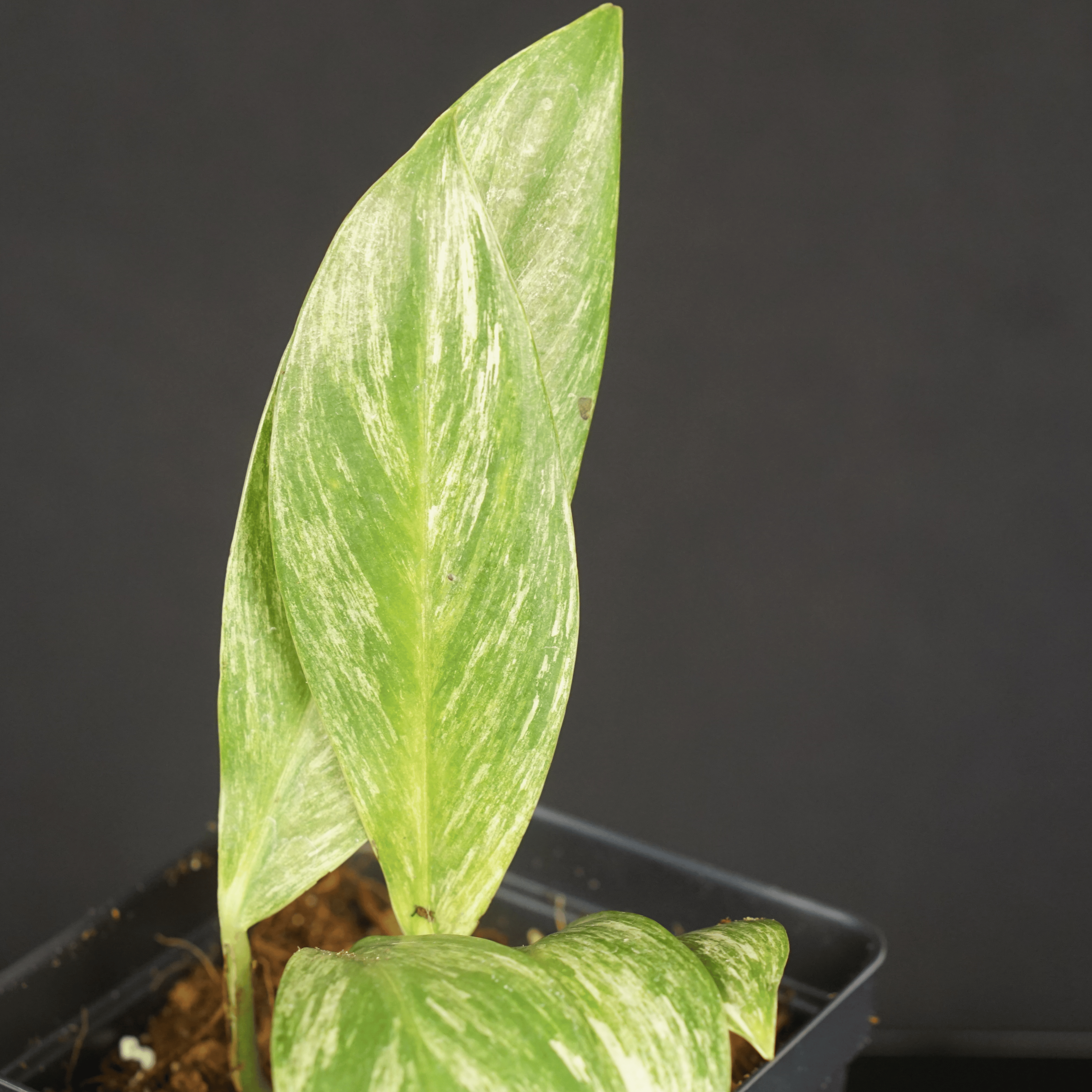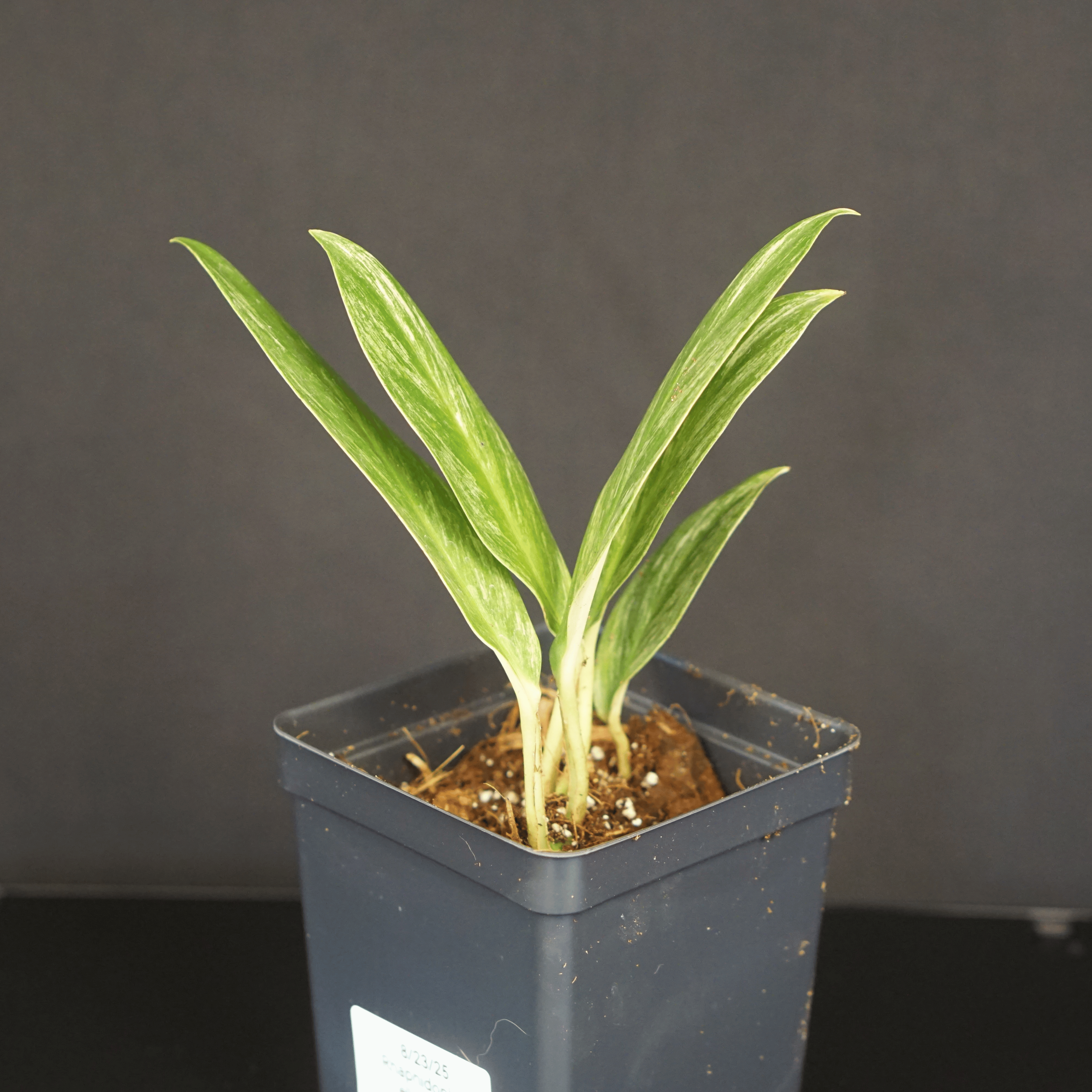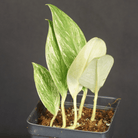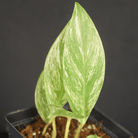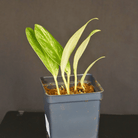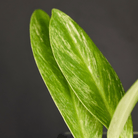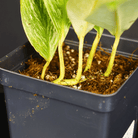Symmetry is overrated. Contrast isn’t.
Rhaphidophora elliptifolia is already rare in cultivation. The variegated form takes it further—layering irregular, high-contrast white and cream marbling over symmetrical, glossy, elliptic leaves. Think somewhere between decursiva and tetrasperma in structure, but slower-growing and far more dramatic.
This is a climbing aroid, though the internodal spacing stays tight and the leaves remain evenly distributed along the stem. The variegation is chimeric, and can range from soft brushstroke patterns to nearly half-moon splits. Expect some variability from leaf to leaf—that’s part of the appeal.
We’re offering:
-
Exact Plant – 4" Pot
The plant shown. Already rooted and climbing, with visible variegation across multiple leaves. -
Grower’s Choice – 4" Pot
Rooted and actively growing plant from our elliptifolia variegata stock. All selections show clear variegation and established roots. Pattern and balance will vary, but all meet our internal standard for color expression.
All plants are rooted in aroid potting mix and ship fully acclimated.
Rhaphidophora elliptifolia (Variegated) Care Overview
| Requirement | Details |
|---|---|
| Light | Bright, indirect light. Helps maintain variegation. Too much = burn; too little = fade. |
| Humidity | 60–80%. Variegated sections hold better color at higher humidity. |
| Watering | Allow top 1–2" of soil to dry before watering. |
| Substrate | Loose, well-draining aroid mix: bark, peat, perlite, and pumice. |
| Temperature | 65–85°F. Avoid cold drafts or extended temps under 60°F. |
| Feeding | Monthly during active growth. Low-nitrogen formulas can support variegation. |
| Growth Habit | Climber. Moderate pace. Internodes stay compact with adequate light. |
| Pests to Watch | Spider mites and thrips. Wipe leaves and inspect regularly. |
Shipping Note:
All Rhaphidophora elliptifolia variegated plants ship rooted in soil and packed carefully to reduce stress. Due to the broad, variegated foliage, minor cosmetic wear is possible during shipping—including yellowing, edge browning, or leaf curl. These do not affect plant health and are not considered damage. Soil may shift in transit.
Our Live Delivery Guarantee
We stand behind every leaf and every mite. If your plant or predatory insects don’t arrive alive on the first delivery attempt, we’ll make it right.
Here’s what you need to know:
- Email us at info@fgmnnursery.com within 24 hours of delivery
- Include clear photos of the item and the shipping label
- Someone must be available to receive the package—plants and bugs don’t do well sitting in the sun, a mailbox, or the back of a delivery truck
For plants, we offer store credit if something goes wrong.
For predatory mites and beneficial insects, you’ll have the choice of a replacement shipment or store credit.
If you contact us after the 24-hour window, we may still be able to help—just know it’s handled case by case.
We pack with care, insulate when needed, and check the weather before shipping. But once it’s in transit, the fastest way to protect your order is to open it right away.

